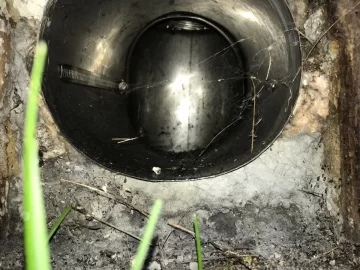Hi all! Here comes another newbie to the forum with another quest for some insight.
As the title says I have a Pleasant Hearth medium 1800 sq ft model. Can’t remember the model number off the top of my head. I’m having an issue filling it it as full as I would like due to the fire going out when I close the door if I don’t fill it just so. This results in shorter burn times.
If I lay all the logs in the same direction and fill in the gaps in between them it is very hard to get any flame going and if I manage to do that it goes out almost immediately after closing the door. So, I have to lay two logs e/w with a small gap between them then take a log and place it on top on the back left corner and angle it toward the front right corner. I also have to be careful to not let any part of a log touch the sides of the fire box or I’ll get the same result. This is on a refill by the way, with a nice bed of coals. Not when I’m first starting a fire.
There seems to be something funky with the air flow going on. It’s always been this way. All clearances seem to be good. There’s probably 2.5 feet of pipe above the stove before a 90° bend to the outside to a masonry chimney. Metal lined flue. Chimney goes 5 feet above the peak of the roof. Clean it every year with little creosote coming out. Always burn well seasoned or kiln dried wood.
This is my fifth year burning with this stove and I feel like I more or less know what I’m doing but this issue has always bugged me. I really want to upgrade to a Blaze King after reading about them. Not sure if that would solve the problem or not though.
Another thing that bugs me about this stove is that when I run it this way it seems like I have little control over the temp. When I turn it down all the way the temp still goes as high as it wants 6/700 sometimes with the air intake all the way down.
Anyway, any thoughts would be greatly appreciated.
As the title says I have a Pleasant Hearth medium 1800 sq ft model. Can’t remember the model number off the top of my head. I’m having an issue filling it it as full as I would like due to the fire going out when I close the door if I don’t fill it just so. This results in shorter burn times.
If I lay all the logs in the same direction and fill in the gaps in between them it is very hard to get any flame going and if I manage to do that it goes out almost immediately after closing the door. So, I have to lay two logs e/w with a small gap between them then take a log and place it on top on the back left corner and angle it toward the front right corner. I also have to be careful to not let any part of a log touch the sides of the fire box or I’ll get the same result. This is on a refill by the way, with a nice bed of coals. Not when I’m first starting a fire.
There seems to be something funky with the air flow going on. It’s always been this way. All clearances seem to be good. There’s probably 2.5 feet of pipe above the stove before a 90° bend to the outside to a masonry chimney. Metal lined flue. Chimney goes 5 feet above the peak of the roof. Clean it every year with little creosote coming out. Always burn well seasoned or kiln dried wood.
This is my fifth year burning with this stove and I feel like I more or less know what I’m doing but this issue has always bugged me. I really want to upgrade to a Blaze King after reading about them. Not sure if that would solve the problem or not though.
Another thing that bugs me about this stove is that when I run it this way it seems like I have little control over the temp. When I turn it down all the way the temp still goes as high as it wants 6/700 sometimes with the air intake all the way down.
Anyway, any thoughts would be greatly appreciated.


